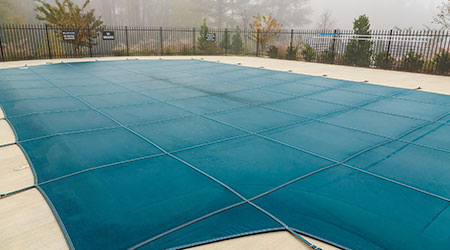
EPA and the Water-Saving Benefits of Pool Covers
September 25, 2018
An in-ground hotel pool holding 34,000 gallons of water can lose 40,000 gallons per year to evaporation, according to the WaterSense program from the U.S. Environmental Protection Agency's (EPA). The evaporation effect does decrease as the pool’s size increases, with an Olympic in-ground pool holding 860,000 gallons possibly losing 570,000 gallons of water to evaporation per year. That loss is still great, especially considering the potential collective water losses of the 240,000 pools installed in commercial and institutional facilities nationwide.
Using a pool cover on outdoor or indoor pools can prevent up to 95 percent of pool water evaporation. Because of this, the EPA has announced a Notice of Intent (NOI) to develop a WaterSense specification for pool covers. Besides physical pool covers, the NOI addresses liquid pool covers, which are microscopically thin alcohol-based layers that float on top of the water and slow down evaporation.
Besides their energy-efficiency benefits, pool covers help heated pools retain heat and minimize filtration demands by keeping out debris.
"In the United States, there are a wide variety of codes, regulations, and performance standards, both mandatory and voluntary, pertaining to swimming pool construction, maintenance, and operation," according to the NOI. "However, few pertain to or specifically require the use of pool covers. Currently, none specifically assess a pool cover’s ability to prevent evaporation, the primary water savings mechanism of a pool cover."
WaterSense is seeking input on several factors related to the specification, including "the reasonableness of establishing water-efficiency criteria for pool covers to reduce evaporation by 80 percent." Interested parties can send comments to watersense-products@erg.com.
Section 5.4 of EPA’s WaterSense at Work, Commercial Pool and Spa Equipment, addresses best practices beyond pool covers to manage water and energy efficiency in commercial and institutional pools.
This Quick Read was submitted by Naomi Millán, senior editor, Building Operating Management.
Next
Read next on FacilitiesNet












